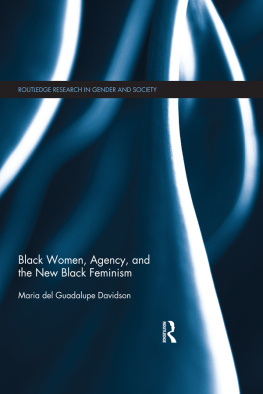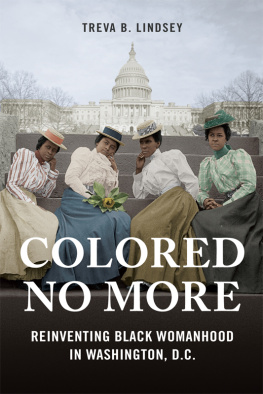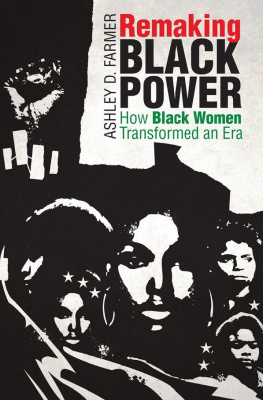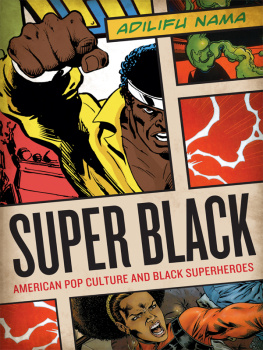WHAT DONT KILL US MAKES US STRONGER
New Critical Viewpoints on Society Series
EDITED BY JOE R. FEAGIN
What Dont Kill Us Makes Us Stronger: African American Women and Suicide
By Kamesha Spates (2014)
Latinos Facing Racism: Discrimination, Resistance, and Endurance
By Joe Feagin & Jos A. Cobas (2014)
Mythologizing Black Women: Unveiling White Mens Racist and Sexist Deep Frame
By Brittany C. Slatton (2014)
Diverse Administrators in Peril: The New Indentured Class in Higher Education
By Edna Chun and Alvin Evans (2011)
First published 2015 by Paradigm Publishers
Published 2016 by Routledge
2 Park Square, Milton Park, Abingdon, Oxon OX14 4RN
711 Third Avenue, New York, NY 10017, USA
Routledge is an imprint of the Taylor & Francis Group, an informa business
Copyright 2015, Taylor & Francis.
All rights reserved. No part of this book may be reprinted or reproduced or utilised in any form or by any electronic, mechanical, or other means, now known or hereafter invented, including photocopying and recording, or in any information storage or retrieval system, without permission in writing from the publishers.
Notice:
Product or corporate names may be trademarks or registered trademarks, and are used only for identification and explanation without intent to infringe.
Library of Congress Cataloging-in-Publication Data
Spates, Kamesha.
What dont kill us makes us stronger : African American women and suicide / Kamesha Spates.
pages cm. (New critical viewpoints on society series)
Includes bibliographical references and index.
ISBN 978-1-61205-041-6 (hardcover : alk. paper)
ISBN 978-1-31563-118-9 (eBook)
1. African American womenSuicidal behavior. 2. African American womenPsychology. 3. African AmericansSuicidal behavior. 4. SuicideUnited States. I. Title.
HV6548.U5S63 2014
362.280820973dc23
2014026401
ISBN 13: 978-1-61205-041-6 (hbk)
ISBN 13: 978-1-61205-042-3 (pbk)

Outside of black communities, scholarly and popular commentary about black women often accents a negative type of black exceptionalism, with an emphasis on pathologies or depressing inequalities. White analysts frequently emphasize negative features of black womens lives that these analysts blame on supposedly weak character or cultural inferiority. The racially stereotyped framing of black personalities, lives, and culture has a long history, even among liberal white social scientists. For instance, the famous analysis of the Jim Crow era, Gunnar Myrdals An American Dilemma (1944), argued that Negro culture is a distorted development, or a pathological condition. Major features of this allegedly pathological culture included family instability, community disorganization, and eccentric religions. Such racially stereotyped framing has persisted in many areas of white America. Many contemporary white analysts continue to insist on a supposed lack of positive black personality, family, and cultural characteristics.
In a brilliant 1940s response to analysts like Myrdal, the great American novelist, Ralph Ellison, countered that black Americans have much that is positive in their values and culture, and much to offer the country:
Myrdal assumes that it is to the advantage of American Negroes as individuals and as a group to become assimilated into American culture, to acquire the traits held in esteem by the dominant white Americans.
Ellison concludes that in black American culture there is much of great value and richness, which, because it has been secreted by living and has made their lives more meaningful, Negroes will not willingly disregard.
The interview data and innovative analysis provided here by Kamesha Spates provide much evidence for Ellisons penetrating conclusions. Spatess probing interviews demonstrate well what might be termed positive black exceptionalismthat is, the many positive and admirable characteristics of black women, including their essential contributions to black families and communities. Demonstrably, these African American women are strong in the social arenas that most Americans have long cherishedpersonal resilience, family, religion, friendships, and community commitments. These remarkable women, like their ancestors, have not only held themselves, their families, and their communities together under difficult racial conditions but also, in reality, have provided much important support for the core institutions of the larger society.
Indeed, the savvy and experienced commentaries of Spatess nearly three dozen interviewees across the United States make evident what insightful black commentators have asserted for centuries now, that this country has never really had a black problemthe common white framing of the black situationbut rather has had a white problem, that is, one of foundational, extensive, and systemic white racism. For centuries one major cost imposed on black women, men, and children by systemic racism is its concealing of much truth about the many admirable aspects of black lives and societal contributions. Spates demonstrates numerous facets of this positive black exceptionalism, but I can only highlight a few key findings in this foreword.
Spates raises the important issue of why the suicide rates for black women are so much lower than for white men and women, a rather surprising empirical reality given this countrys hoary and continuing racism. She pursues throughout this book what she terms the black-white suicide paradox, which she summarizes thus: Why wouldnt black womens suicide rate surpass those of whites when year after year I have seen my mother, sisters, aunts, and female cousins endure multiple stressors? Logically, one would think that black womens suicide rate would surpass white mens, and certainly white womens. Surprisingly, given how easy these striking data on US suicide rates are to find, the extant social science literature does not provide an adequate answer to this important question.
Spates directly confronts key aspects of the black-white suicide paradox and provides some perceptive answers. One aspect is the great array of racially related stressors in black womens everyday environments. As she shows, these painful and recurring stressors should make them more suicide prone than whites, yet they do not. One reason for this is black spirituality and religion. In their racially framed notions about black Americans generally and black women in particular, most whites, including social scientists like Myrdal, ignore the great and meaningful spirituality that is at the heart of African American religion. Yet, as Spates shows, black womens deep spirituality and religious faith provide one important explanation for the very low black female suicide rateindeed for the fact that a substantial majority of these black female respondents have never entertained even the thought of suicide. Most of these respondents themselves cite early religious upbringing, being taught suicide is a sinful act, and having a spiritual goal of seeking Gods purpose in life as likely reasons for that low suicide rate. Indeed, given the very high white male suicide rate, one has to wonder about whether frequent white male claims of being religious, especially in political rhetoric, are actually a true picture of their religion. Interestingly and significantly, Spatess respondents raise serious questions about the character and strengths of white men.











